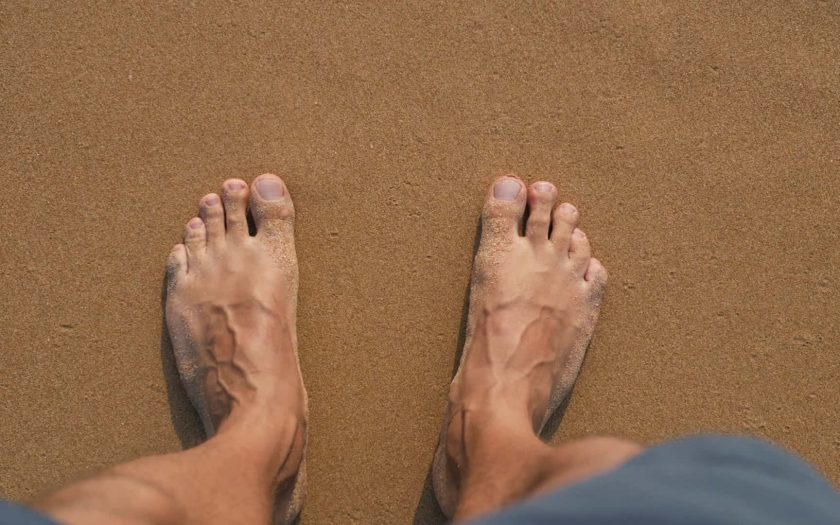Keep an eye on moisture.
In summer, feet often sweat and are exposed to heat, sand, water, and closed shoes. This creates a perfect environment for fungal infections and irritations, especially for people with diabetes, whose skin is more vulnerable. Moisture between toes, wet socks, or poorly dried feet after swimming can cause small cracks and irritations that easily turn into infections. This is especially dangerous for diabetics because their sensitivity is reduced, and they might not notice the problem right away. For example, walking on the beach in sandals with wet feet can contribute to the development of a fungal infection. To avoid this, dry your feet thoroughly after showering or bathing, especially the space between your toes. In the summer, you should also change your socks daily, and even more often if you sweat a lot.
Avoid using plasters or folk remedies for calluses.
Calluses appear more often in summer due to new shoes, sand, and long walks, which put extra stress on your feet. And the first urge that arises is to cover the problem area with a plaster or use a ‘proven’ folk remedy. But for a person with diabetes, this can be dangerous and lead to complications. This is because pharmacy callus patches often contain acids that soften the skin. For a healthy person, this is not a problem, but in diabetics, the skin on the legs is thinner, more vulnerable and often has reduced sensitivity. This means you might not feel the acid burning not only the callus but also the healthy skin around it. It is also dangerous to use folk methods, such as compresses with vinegar, garlic or alcohol — they can harm even more than the callus itself. It best not to touch painful or inflamed calluses on your own — see a doctor or podiatrist who can safely remove them. In the future, choose comfortable, well-fitting shoes that don’t rub, and use special protective insoles or cushions for your feet.
Avoid prolonged sun exposure on your feet.
In summer, many people like to expose their skin to the sun by wearing sandals and shorts. But for people with this condition, prolonged sun exposure can be not only unpleasant, but also dangerous. Due to the reduced sensitivity of the skin, you may not even notice a sunburn on your legs. You could be sitting on the beach feeling just warm and pleasant, but in fact getting a second-degree burn. Overheating can also cause swelling, especially if you have circulation problems, making it harder to wear shoes and impairing blood flow. To protect your feet, wear lightweight, breathable closed-toe shoes, and apply sunscreen not only to your face and hands but also to your feet, especially on top where the skin is thin.
Never walk barefoot, even on the beach.
For many people, summer is an opportunity to walk barefoot on the sand or grass, feeling free and light. However, for people with diabetes, this habit can be a source of serious problems. Due to the reduced sensitivity in the feet, even minor injuries such as a scratch or prick from a sharp stone often go unnoticed and can develop into serious, deep wounds. On the beach or in the park, there may be sharp shells and small debris underfoot that can easily injure the delicate skin of your feet. In hot weather, open wounds can quickly become infected, and with diabetes, they heal very slowly, potentially leading to serious complications. Therefore, it is better to wear special protective shoes or sandals with sturdy soles. This will help to avoid injuries and also protect against overheating of the feet.
Check your feet daily.
This is one of the simplest yet most important habits for people with diabetes, especially in summer. Small cuts, redness, swelling, or calluses can be the start of serious problems if left unnoticed. Due to impaired sensitivity, you may not feel pain or discomfort, so the damage may go unnoticed. To prevent complications, spend a few minutes every evening carefully inspecting your feet — especially between the toes, on the soles, and heels. If you notice redness, cracks, blisters or corns, do not ignore them and make an appointment with a specialist.
It is also important to take your medications (for example Accarb, Actos, Amaryl, Cetapin XR, Daonil, Glyciphage) regularly, depending on your type of diabetes, as prescribed by your doctor. This comprehensive approach will help protect your feet during summer and keep them in good condition.

